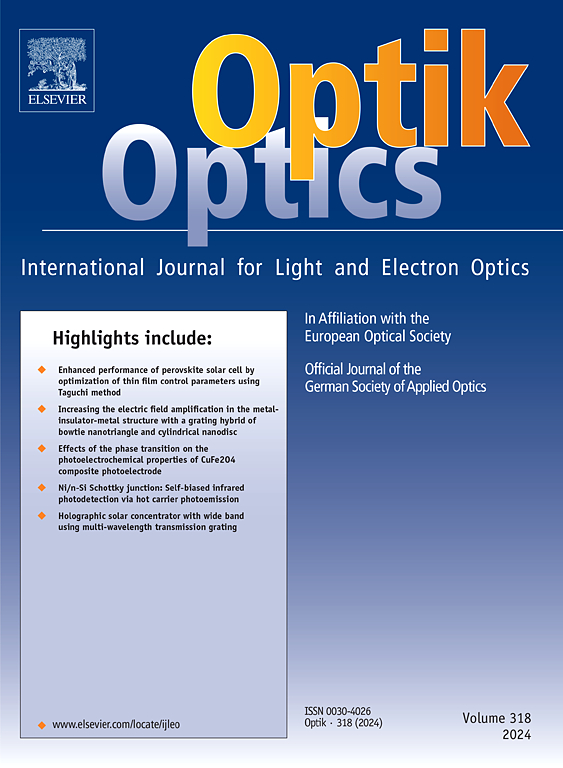结合随机置乱、插值氡扩散和一种新的一维混沌映射的安全图像加密算法
IF 3.1
3区 物理与天体物理
Q2 Engineering
引用次数: 0
摘要
在本文中,我们提出了一种新的安全的图像加密算法,该算法集成了Radon域中的插值,随机置乱和新设计的改进的Delta sin - cos (IDSC)混沌映射。与之前的研究不同,这项工作在Radon域中引入了图像插值,解决了Radon变换后出现的尺寸不匹配问题,并实现了有效加密的标准化图像尺寸。为了解决这个问题,我们在Radon域中使用插值。该方案首先对输入图像进行Radon变换,然后通过样条插值将变换后的图像调整为固定尺寸256x 256。采用两级随机置乱策略:先进行块级置乱,再进行块内置乱,增强混淆。IDSC混沌映射在宽参数范围内具有优越的混沌行为,用于扩散,而阿诺德映射(AM)引入了额外的置乱以提高安全性。大量的实验结果验证了该方法的鲁棒性,在像素数变化率(NPCR)、统一平均变化强度(UACI)、直方图、峰值信噪比(PSNR)、均方误差(MSE)、熵分析、卡方检验、性能分析和相关系数(CC)方面表现出高的密钥灵敏度、抗统计和差分攻击以及强大的加密性能。本工作通过将氡域插值与高效混沌映射相结合,提供了一个重大的进步,使其适用于敏感图像数据的安全传输。本文章由计算机程序翻译,如有差异,请以英文原文为准。
A secure image encryption algorithm combining random scrambling, interpolated radon-based diffusion and a novel one-dimensional chaotic map
In this paper, we propose a novel and secure image encryption algorithm that integrates interpolation in the Radon domain, random scrambling, and a newly designed Improved Delta Sine-Cosine (IDSC) chaotic map. Unlike previous studies, this work introduces image interpolation in the Radon domain, addressing the dimensional mismatch issue that arises after Radon transform and enabling standardised image sizes for effective encryption. To resolve this issue, we use interpolation in the Radon domain. The proposed scheme begins by applying the Radon transform to the input image, followed by spline interpolation to resize the transformed image to a fixed dimension of 256× 256. A two-level random scrambling strategy is then employed: first by block-level shuffling and then intra-block pixel scrambling, enhancing confusion. The IDSC chaotic map, with superior chaotic behaviour across a wide parameter range, is utilised for diffusion, while the Arnold map (AM) introduces additional scrambling to improve security. Extensive experimental results validate the proposed method’s robustness, demonstrating high key sensitivity, resistance to statistical and differential attacks, and strong encryption performance in terms of Number of pixels changing rate (NPCR), Unified average changing intensity (UACI), histogram, Peak signal to noise ratio (PSNR), Mean square error (MSE), Entropy Analysis, Chi-square test, Performance Analysis and Correlation coefficients (CC). This work provides a significant advancement by combining Radon-domain interpolation with a highly effective chaotic map, making it suitable for the secure transmission of sensitive image data.
求助全文
通过发布文献求助,成功后即可免费获取论文全文。
去求助
来源期刊

Optik
物理-光学
CiteScore
6.90
自引率
12.90%
发文量
1471
审稿时长
46 days
期刊介绍:
Optik publishes articles on all subjects related to light and electron optics and offers a survey on the state of research and technical development within the following fields:
Optics:
-Optics design, geometrical and beam optics, wave optics-
Optical and micro-optical components, diffractive optics, devices and systems-
Photoelectric and optoelectronic devices-
Optical properties of materials, nonlinear optics, wave propagation and transmission in homogeneous and inhomogeneous materials-
Information optics, image formation and processing, holographic techniques, microscopes and spectrometer techniques, and image analysis-
Optical testing and measuring techniques-
Optical communication and computing-
Physiological optics-
As well as other related topics.
 求助内容:
求助内容: 应助结果提醒方式:
应助结果提醒方式:


